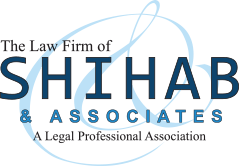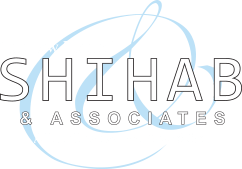Shortly after the issuance of the 2010 Neufeld Memo, our firm began to assemble resources to assure that our clients comply with the additional requirements introduced by Associate USCIS Director, Donald Neufeld in a memorandum he signed early January 2010. To be candid, the numerous H-1B visa Requests for Evidence issued by the USCIS in the two years earlier provided clear antecedents to understanding what the memo was intended to accomplish. Having processed thousands of H-1B visa petitions on behalf of our clients nationwide in Columbus, Ohio and in Washington, DC, we knew that unless the Neufeld Memo is set aside or revoked the H-1B visa program has just experienced a major evolution. This entry is intended to identify systemic internal adjustments that certain companies must undergo in order to have their H-1B visa petitions approved.
Will the H-1B Visa January 2010 Neufeld Memorandum Survive Legal Attack?At a “Collaboration Session” hosted by the USCIS in Washington DC on February 18, 2010, the legal and business communities strongly denounced the issuance of the Neufeld Third Party H-1B visa memorandum as contrary to law and to the economic welfare of the US. The American Immigration Lawyers Association, headquartered in Washington, DC is on record stating that the aforementioned memorandum does not comport with the legislative intent of the Immigration laws and regulations and that it violates the “notice and comment” rulemaking mechanism introduced by the Administrative Procedures Act. Others in the legal community stated that the application of the January 2010 Neufeld Memo has transcended or bled through nonimmigrant visa petitions, other than the H-1B visa program. They claim, for instance that L-1 visa petitions are now being adjudicated applying the criteria set forth in the January 2010 Neufeld Memo. It remains to be seen whether the Neufeld memo will survive a legal challenge as an illegal attempt by the USCIS to alter longstanding interpretations of the H-1B visa regulations. Unless this controversial memorandum is successfully challenged, the legal and business communities must, pro haste, implement certain internal adjustments in order to go on with business of retaining highly skilled international labor.
What Does the Neufeld Memo Require an H-1B Visa Petitioner to Show?The Neufeld Memo amended the Field Adjudicator’s Manual by introducing Eleven (11) prong criteria to establish whether there existed a true employer employee relationship between the petitioning employer and the Beneficiary when her worksite is located at a third party end clients. These criteria have their foundational basis in the common law doctrine of “Master and Servant.” This doctrine establishes criteria for determining whether an employer employee relationship existed between parties. During the recent Collaboration Session held on February 18, 2010, the USCIS stated that they intended to make things easier for petitioners to understand what the USCIS is after when it adjudicates H-1B visa petitions. When examining the eleven (11) requirements set forth in the Neufeld memo, it is important to note three important fundamentals:
- The Memo only applies to H-1B visa petitions filed where the beneficiary’s worksite is located at a third party end client;
- The Memo’s requirements will apply to H-1B visa extensions, transfers as well as new petitions; and
- The employer need not establish that it meets all of the eleven prongs introduced in the memo; however, the more prongs are met, the stronger the H-1B visa petition becomes in the eyes of the USCIS.
The eleven prong criteria ask whether the petitioning employer
- Supervises the beneficiary.
- Maintains such supervision if the beneficiary is off site. Is the supervision in the form of weekly calls? Site visits? Reporting back to main office?
- Has the right to control the work of the beneficiary on a daily basis;
- Provides tools, instrumentalities needed for the beneficiary to perform the duties;
- Hires, pays and has the ability to fire the beneficiary;
- Evaluates the work product of the beneficiary;
- Claims the beneficiary for tax purposes;
- Provides the beneficiary of any type of employee benefit;
- Provides the beneficiary with proprietary information in order for the beneficiary to perform the duties of the her employment?
- Has a line of business that is directly in line with the end product that the beneficiary produces; and/or
- Has the ability to control how the work product is accomplished?
In our law firm, we have quickly assembled a mechanism which assures compliance with the Neufeld Memo. In fact, we have received several approvals on H-1B visa petitions where the beneficiary works at a third party end client site. We accomplished this by advising our clients to change the manner in which they manage their employees, in good faith, to meet the criteria. Here are examples of simple steps an employer must undertake as soon as possible:
-
Emphasize Collaboration & Partnership between the H-1B visa Petitioning company, middle (preferred) vendors if
any and end the client. The more consultants placed at the end client
site, the easier it will be show collaboration and partnership.
- Establish technical “Purposes & Needs” Document identifying skills provided by petitioning company and any middle vendors stressing on team effort played by all parties to serve the end client and its technical objectives.
- Mirror the duties of beneficiary in the initial offer letter and through the middle contracts all the way to the end client. This will show that the beneficiary’s actions are controlled.
- Identify the name of the beneficiary and end client on all contracts with middle vendors.
-
Establish Good Employer Policies and Procedures:
- Establish Employment Manual setting forth supervision, control, work product, trade secrets of the employer and periodic evaluation
- Engage in frequent training of beneficiaries (ADA, Sexual harassment, technical training, etc.)
- Establish mandatory webinars and training seminars on employer’s vision stressing their roles in the collaboration and partnership process.
- Institute mandatory reporting mechanisms regarding product of beneficiaries.
- Include end-client managers in the conversation and evaluation.
-
Plan for the H-1B Visa Ahead of Time:
- Have documented, open and continuing dialogue with intervening partners regarding the work of the beneficiary.
- Draft intervening agreements with preferred vendors with Neufeld Memo in mind.
-
Consult with Immigration Counsel Experienced in These Matters
- Make certain that your Immigration Lawyer knows how partner with your company to assure compliance.
Now more than ever the role of immigration lawyer is not a mere scrivener but must be one of true counsel and partner. The process of getting an H-1B visa petition approved will continue to require experience, deliberation, aforethought and planning. The Law Firm of Shihab & Associates, Co., LPA has proven record of being that partner. Contact us to discuss your company’s H-1B visa needs. Our slogan is “Innovative Representation, Proven Results.”

